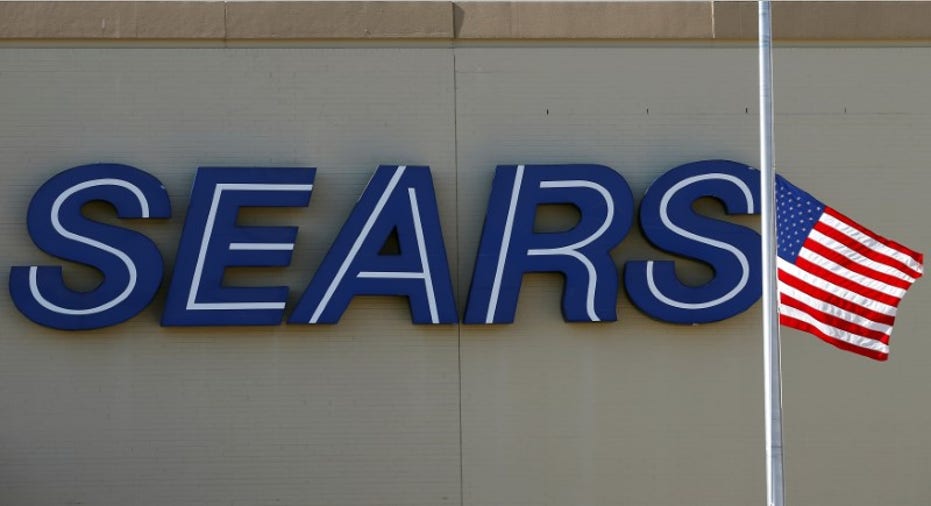Sears can't be saved by Black Friday -- Here's Why

Times are getting desperate for Sears Holdings Corporation (NASDAQ:SHLD).
Shares of the ailing retailer slipped to an all-time low this week, falling below $4 as concerns about a potential bankruptcy mount. In recent weeks, the company saw Bruce Berkowitz, one of its biggest investors, step down from its board; drew down a $200 million loan faster than expected; lost one of its biggest suppliers, Whirlpool Corporation (NYSE:WHR), over a pricing dispute; and reported a 15.3% decline in comparable sales in the third quarter, ahead of its full earnings report later this month.
| Ticker | Security | Last | Change | Change % |
|---|---|---|---|---|
| SHLD | GLOBAL X FDS DEFENSE TECH ETF USD | 39.41 | +0.23 | +0.59% |
| WHR | WHIRLPOOL CORP. | 111.18 | +1.38 | +1.26% |
Fortunately for Sears, which also owns Kmart, the retail industry's busiest season of the year is right around the corner. Black Friday, so-called because it's retailers' best opportunity to get out of the red ink and into the black, is just next week, followed by Cyber Monday and then four weeks of packed shopping malls as Americans hustle to get all of their Christmas presents in time.
Retailers often make a majority of their profits in the holiday quarter, so it's clear why Sears may be looking forward to the shopping season. Even so, it won't save the company. Here's why:
IMAGE SOURCE: SEARS.
Past is prologue
Black Friday hasn't been enough to save Sears in recent years, so why would it be any different this year? In 2016's fourth quarter, the company reported an adjusted loss of $226 million, following an adjusted loss of $400 million in the fourth quarter of 2015.
In the holiday quarter in 2014, the company reported a net loss of $159 million after a $338 million deficit in the same period in 2013.
It also reported a massive loss in the fourth quarter of 2012. Amazingly, you'd have to go all the way back to 2011 to find a holiday quarter in which Sears posted an adjusted profit. The company, meanwhile, hasn't reported an annual operating profit since 2010. Whatever's wrong with Sears, clearly the power of Black Friday isn't enough to fix it.
Suppliers are fleeing
Whirlpool's divorce from Sears was well-publicized, as the two companies had been partners for a century. Whirlpool is the world's largest home appliance maker, while Sears had been the nation's biggest appliance seller until recently, which is why the two made for natural partners.
However, Whirlpool isn't the only company trying to separate itself from the flagging retailer. In its recent earnings update, Sears blamed a slide in revenue in part on a reduction in "consumer electronic assortments" in both Sears and Kmart stores, a sign that electronics suppliers are getting nervous. Importantly, electronics are a key category for holiday sales, as products like TVs, video game systems, and tablets make popular gifts.
Earlier in the year, Sears came into conflict with tool suppliers One World Technologies and Ideal Industries to the point of filing lawsuits against each over contract disputes, and the company also offloaded its Craftsman tool brand, which is now being sold at rival Lowe's.
Other suppliers, meanwhile, have demanded Sears pay cash upfront on purchases, further tightening the company's liquidity. With suppliers fleeing, Sears may not even have enough merchandise to sell, and empty shelves will drive even more customers away.
The whole department sector is ill
In some ways, Sears isn't to blame for all of its problems. The rise of e-commerce has decimated mall traffic, and in the digital era department stores seem to be becoming obsolete. The cavernous emporiums that offer everything from clothes to cosmetics to jewelry to home goods were once a one-stop shop for Americans during the holidays, but with few brands of their own to offer, the format now seems to be at a disadvantage against other brick-and-mortar retailers. Sears' rivals are also struggling.
Gordman Stores declared bankruptcy earlier this year, and Bon-Ton Stores appears to be on its way to doing the same. Department store stocks have gotten crushed this year -- even Macy's is closing dozens of stores and consolidating flagships, and J.C. Penney shuttered 138 locations. Hudson Bay's Lord & Taylor sold its flagship store on New York's Fifth Avenue, and will now lease just a quarter of it. Even Nordstrom, arguably the healthiest department store chain, saw comparable store sales fall 5% in its most recent quarter.
In other words, even if Sears were to somehow have a blowout Black Friday and post a profitable quarter, the company is still facing enormous secular headwinds from shopping habits in the broader department store sector. The writing is on the wall for struggling department stores like Sears as the format dies a slow death.
Unfortunately for the once-great retailer, there won't be much of a reason to celebrate this holiday season.
10 stocks we like better than Sears Holdings
When investing geniuses David and Tom Gardner have a stock tip, it can pay to listen. After all, the newsletter they have run for over a decade, Motley Fool Stock Advisor, has tripled the market.*
David and Tom just revealed what they believe are the ten best stocks for investors to buy right now… and Sears Holdings wasn't one of them! That's right -- they think these 10 stocks are even better buys.